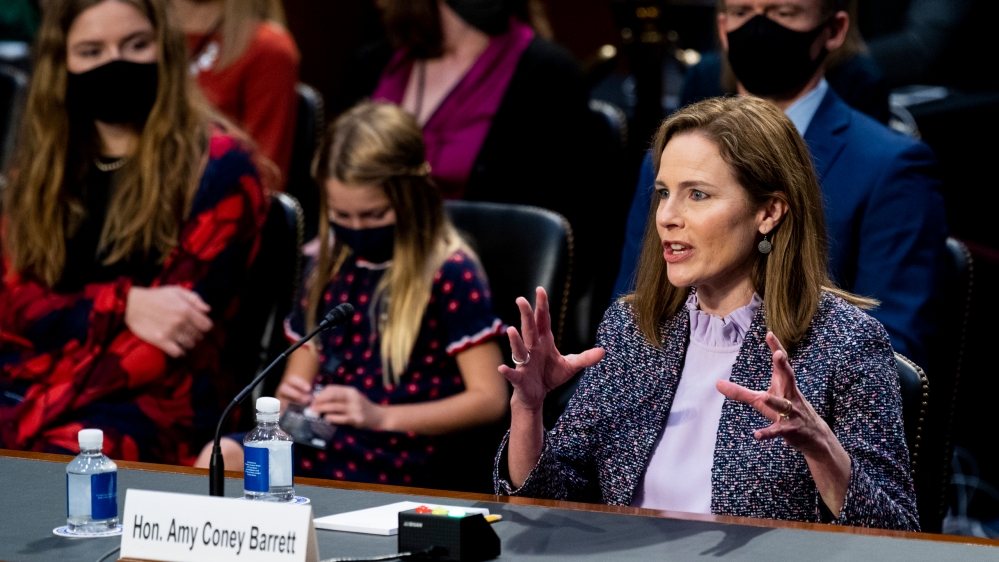On September 18, 2020, Associate Justice Ruth Bader Ginsburg, affectionately given the moniker “The Notorious R.B.G.” by her devout followers, passed away following a courageous battle against cancer. Justice Ginsburg was nominated by former president William Clinton and confirmed to the United States Supreme Court on August 3, 1993.
Through her tenure, Justice Ginsburg was widely praised for her tenacity, promotion of women’s rights and overturning gender discrimination in such notable cases as United States v. Virginia, and her passionate dissent in Ledbetter v. Goodyear Tire & Rubber Co., to name but a few. Up until 2018, Justice Ginsburg did not miss a single day of oral arguments despite her many health scares and her husband’s passing. The universal and bipartisan respect garnered by Justice Ginsburg speaks to her overarching impact and esteem of her peers. Her shoes are large to fill, especially given that her work helped paved the way for the very judge that has been sworn into the Supreme Court to fill her vacancy.
As we turn our attention to President Trump’s nomination of Judge Amy Coney Barrett, the natural comparison between Justice Ginsburg and Justice Barrett begins. Justice Barrett by all accounts is incredibly accomplished and poised and has the experience requisite for her role as Associate Justice of the Supreme Court. She was confirmed to the U.S. Court of Appeals for the Seventh Circuit in October 2017, was a well loved and respected professor at Notre Dame Law School and is raising a family of seven children. Justice Barrett is the first mother of school-age children to serve on the U.S. Supreme Court.
Justice Ginsburg believed in a living or active Constitution, a jurisprudence approach that believes the United States Constitution is a document that adapts to the times, taking on different meanings depending on when it is interpreted. In stark opposition is the jurisprudence of originalism or textualism, both of which hold that constitutional interpretation must give greater weight to the text of the Constitution and what is seen as the common meaning of the language at the time of its adoption as implied and understood by the Founding Fathers.
When looking at Justice Barrett, the seeds of her judicial philosophy run deep, hailing back to her time as a law clerk under the late Justice Antonin Scalia, her former mentor. Justice Barrett stands proudly behind her interpretation of law under the jurisprudence of originalism. However, as she made clear during her nomination hearings, she is not a replica of Justice Scalia:
“…Justice Scalia was obviously a mentor….He was a very eloquent defender of originalism, and that was also true of textualism, which is the way that I approach statutes and their interpretation. And similarly to what I just said about originalism, for textualism, the judge approaches the text as it was written with the meaning it had at the time and doesn’t infuse our own meaning into it. But I want to be careful to say that if I’m confirmed, you would not be getting Justice Scalia. You would be getting Justice Barrett. And that’s so because originalists don’t always agree and neither do textualist. ”
So, simply stated, what does this all mean? The Supreme Court of the United States is the third and final branch of the United States government, alongside the legislative and executive branches. The legislative and judicial branches have a very significant interplay. In breaking this down to its most foundational elements on how the United States Constitution was written, the legislature makes the laws, and the judiciary interprets the laws.
The impact to present-day is that the active or living Constitution jurisprudence effectively permits the judiciary to create laws by deciding on cases in such a manner as to create laws or perceived rights through the interpretation and application of the existing laws. This is a slippery slope, as this empowers the courts to act as a second branch of legislation which, many argue, far exceeds the power granted to the courts by the Constitution.
Originalism and textualism, however, confine the courts to interpret each case under the intent of the U.S. Constitution, governing law(s) based on interpretation at the time it was written and whether the conduct therein falls within this legislation, precedent and law. Even if a judge personally or morally disagrees with the governing law that applies to a given case, the judge must set those personal opinions aside and decide strictly on what is legislatively present or has been established through precedent and the Constitution, and not “fill in the gaps” and therein create law from the bench. In the absence of existing rights, if a law should be created, or a personal right applied, it must be defined and extended by the legislature, not created by the courts.
On October 26, 2020, after a 52-48 majority vote, the U.S. Senate confirmed Amy Comey Barrett as Associate Justice to the Supreme Court, and she was sworn into office by Justice Clarence Thomas. The implications of Justice Barrett’s confirmation to the Supreme Court are striking.
Given Justice Ginsburg’s active jurisprudence, the progressive movement has enjoyed an effective extension of the legislative branch with the “Ginsburg bloc” in uniting the Justices with active jurisprudence for almost thirty years. In opposition, through her confirmation to the Supreme Court, Justice Barrett will create a majority of Justices in the Court that align with originalist and textualist interpretations of the laws and Constitution. This will mark a substantial shift in the likely cases brought before the Supreme Court, the decisions from the Court, and the length of the leash the legislature will have to play with over the next decades.
With the 2020 Presidential election in dispute and numerous lawsuits pending in Pennsylvania, Georgia, Michigan, Arizona and Wisconsin, it seems more likely by the day that the matter in some capacity will be heard before the Supreme Court. Indeed, as was clarified by the Court in the infamous Gore v. Bush dispute, “A significant departure from the legislative scheme for appointing Presidential electors presents a federal constitutional question.” Justice Barrett will be called upon early into her tenure as Associate Justice to potentially cast the deciding vote in review of what is without question the most challenged Presidential election of the United States.
Nicole Nemeth is a Senior Fellow with the Budapest Fellowship Program.
Foto: Bill Clark/AP










